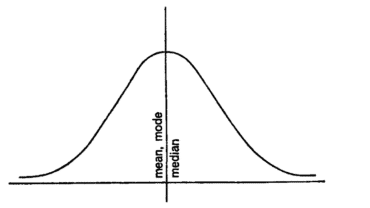Random Sample
Introduction to selecting random sample
If one is sampling front a population composed of an infinite number of elements, a sample selected in such a manner that the selection of any member of the population does not affect the selection of any other member, and each member has the same chance of being included in the sample, is called a random sample.
What is a finite population?
If onee is sampling from a finite population with replacement. Each member is returned to the population after being selected, and might be selected more than once. It is defined exactly as above. In other words, a finite population in which the sampling is carried out with replacement can, theoretically, be considered as an infinite population.
If one is sampling from a finite population without replacement, then we say that it is a random sample. The elements are not returned to the population after they have been observed. If all other samples of the same size have an equal chance of being selected. No sample is any more likely to be selected than any other.
Read about biology by clicking here
Example
For example, a choice of three raffle tickets from a bag containing 100 tickets is a sample from a finite population without replacement. It is a random sample because any other three tickets had the same chance of being selected.
The word ‘random’ indicates that the sample is selected in such a way that it is impossible to predict which members of the population will be included. And that it is simply a matter of chance that any particular member is selected. In order to apply the statistical techniques explained in this book in analysing sample data, it is necessary that the sample be a random one (with very few exceptions). The statistical techniques are justified by statistical theory, which in turn rests upon probability theory, and we must have random samples before the probability theory is applicable.
It is sometimes not an easy matter to obtain it. If the population is small, one of the simplest ways of obtaining a random sample is to list the members and draw the sample ‘out of a hat’.
Whenever an integer can be assigned to each member of the population, a different-number table can be used to obtain a random sample. This table is a listing of digits that have been obtained by some random process. One way of assigning an integer to each member of the population is simply to number the members 1, 2, 3, and so on. Sometimes the members cannot be conveniently numbered, in which case there are other methods of obtaining a random sample by means of random numbers.
Furthermore:
Each member of the population has a corresponding number in the random-number table. Or perhaps more than one corresponding number. To obtain a random sample, we would begin reading numbers in the random-number table at some randomly chosen place, and for each random number read, the member of the population that corresponds to that number is included in the sample. For instance, if our population consists of a thousand members, we could assign them numbers from 000 to 999. If we read the numbers 027, 831, and 415 in the random-number table, we would include in the random sample those members of the population whose numbers are 027, 831, and 415.
The data shown in Table are the scores that one hundred students obtained on the verbal portion of a Scholastic Aptitude Test; we shall refer to these scores as the SAT-Verbal scores. The sample was obtained from a population of students, using a table of random numbers to guarantee that the sample was random.
Table with Random Sample of 100 SAT-Verbal
| 546 | 592 | 591 | 602 | 619 |
| 689 | 644 | 546 | 602 | 695 |
| 490 | 536 | 618 | 669 | 599 |
| 531 | 586 | 622 | 689 | 560 |
| 603 | 555 | 464 | 599 | 618 |
| 549 | 612 | 641 | 597 | 622 |
| 663 | 546 | 534 | 740 | 644 |
| 515 | 496 | 503 | 599 | 618 |
| 557 | 631 | 502 | 605 | 547 |
| 673 | 708 | 624 | 528 | 645 |
| 650 | 656 | 599 | 586 | 536 |
| 546 | 515 | 644 | 599 | 734 |
| 502 | 541 | 530 | 663 | 599 |
| 547 | 579 | 666 | 578 | 635 |
| 496 | 541 | 605 | 560 | 695 |
| 426 | 555 | 483 | 641 | 546 |
| 515 | 609 | 534 | 645 | 572 |
| 637 | 457 | 631 | 721 | 578 |
| 541 | 592 | 666 | 619 | 663 |
| 547 | 624 | 567 | 489 | 528 |





